Art of Stellar Photography
1990/03/01 Malin, David Iturria: Elhuyar aldizkaria
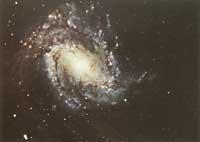
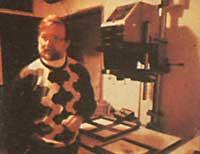
The first practical imaging system was developed by pioneers of photography in the 1830s. Astronomers did not use these new resources because they were not as sensitive as capturing light objects in the far sky. But in 1879 the situation changed when photographers started using dry plates. These plates were coated with silver salt in gelatin. The dry plates, being more useful than the old ones, had a greater sensitivity to light.
The new dry plates revolutionized photography and astronomy. First photograph of a nebula taken in 1880 by astronomer Henry Draper of New York. But the first step of the real revolution took place in January 1883. British astronomer Ainslee Common took the first astronomical photograph of truth from his home garden under the London city of Ealing, with a home telescope. This photograph showed for the first time too slow stars with human eyes. Astronomy went from studying at night the objects seen in kneading those who are not seen.
In the following years the photographic plate quickly replaced the eye as an astronomical detecting light. This change prompted the construction of ever larger telescopes. On the other hand, the best images of these tools allowed astronomers to ask for better emulsions. The greater sensitivity of the emulsions and the improvement of the quality and size of the telescopes changed our image of the universe. In the first half of this century, astronomical advances were based on the photographic plate.
In the 1960s, astronomers began using electronic detectors more sensitive than photographic plates. Eastman Kodak then published new emulsions. These emulsions were specially designed to detect luminous objects during the night. Although these products were less sensitive than those of the previous generation, astronomers quickly learned to accelerate the process. This work could contain strange processes such as the introduction of plates into the furnace or the introduction of hydrogen gases. These surprising hypersensibilization procedures greatly shortened exposure times. Hypersensibilization is now a common practice among photographic astronomers.
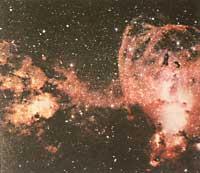
New additions present management difficulties. When the plates have come into the oven and have been gassed, oxygen and moisture affect violently. Therefore, they must be stored in nitrogen. The plates are quite large (more than 35.5 cm 2) and very thin (approx. 1 mm), so use them carefully so that they do not break. Once the exposure time is finished, they are revealed one by one. In this way, the sensitivity of the plates is uniform and, therefore, the brightness of the different objects appearing on the plate is comparable.
This work requires a special skill and is not easy to learn. Often observatories that have developed and improved these techniques offer astronomers their photographic service rather than allowing the use of installations and processes to those sporadic visitors.
In addition to developing the management and management techniques of these special plates, astronomers have developed new procedures to extract information from them. The first approach is to study magnifying glass plates. This allows large works in a single exhibition, such as Schmidt telescopes, which occupy large parts of the sky.
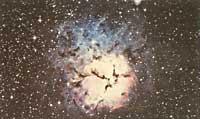
A good example was to find “shells” around elliptical galaxies.
Although the eye is the most fascinating tool for detecting abnormal things, the brain is exhausted working for a long time. Best machines for deep exploration. British astronomers have developed two automatic photographic plate scanning machines. The Galaxi Machine of the Royal Observatory of Edinburgh and the Cambridge Plate Measuring Machine have been a success. The detection of further quasars, for example, has been performed through these machines.
These computer-driven scanning machines are highly capable, although much of the information of interest can be obtained through special techniques in the dark room. This is partly because new fine grain emulsions can detect objects of very different brightness and do not distinguish the eyes of machines.
At the Anglo-Australian Observatory we have developed new methods to exploit these characteristics of the new photographic plates. With them we expand the field of application of photography to astronomy. For twelve years we have developed and refined three techniques. The techniques are the unsharp masking, photographic amplification and multi-disarmament of images. Through them, photographic astronomy can provide information about the brightest and brightest celestial objects in the sky.
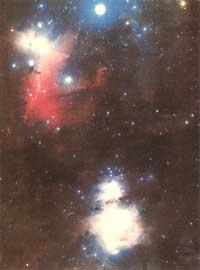
These processes are different in detail, but they have two common keys: the images are manipulated with a touch copy using a diffuse light source and many plates are combined with a simple combination method. Depending on the lens, the same plate offers more luminous objects or color photographs. In addition, methods are non-destructive.
These simple techniques allow astronomers to draw large areas of the sky in search of luminous objects. We have also developed a color photography technique. Color photographs, besides being beautiful, are a good source of information. Color photographs have given weight to color in astrophysics. The information provided by a color photograph cannot be compared to that obtained by superimposing black and white images obtained by filters of different colors. Color gives much more.
The photographic amplification and techniques of unsharp masking are powerful tools for the study of the two ends of celestial objects, very bright and very bright. When these two techniques are combined with photography in three colors, different views of very well studied objects are obtained. For example, the color photo I got when I applied this technique to the Centaurus A X-ray showed a band of dust across the galaxy.
This method has shown that the Trifida Nebula is surrounded by another fine blue nebula.
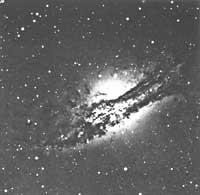
Even without manipulating the image, photographs can present subtle color differences that show important astrophysical phenomena. The two Carina nebulae appear in the sky next to the baptismal font, but the left nebula is twice as far from the ground as the other. The color photo indicates that, giving both different tones. We see the farthest nebula through the dust plane of our galaxy. The powder absorbs part of the light that passes through. Absorbs more blue than red radiation. Consequently, the farthest nebula is in a redder tone. This photo is a good example of interstellar sliding to red (by Doppler effect).
Large photographic plates coated with uniform emulsions can be recorded in a single exhibition. It is the most efficient way to detect millions of stars and galaxies. When these images are manipulated with special techniques, Ainslee Common carries a more charming universe than she could imagine.

Gai honi buruzko eduki gehiago
Elhuyarrek garatutako teknologia



